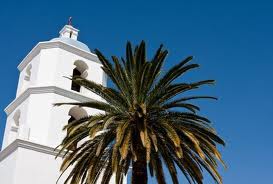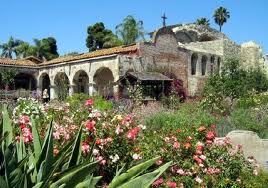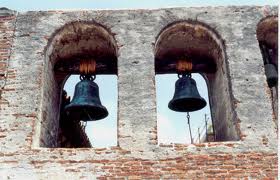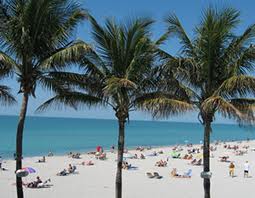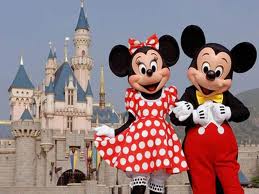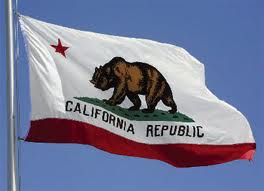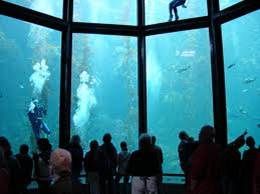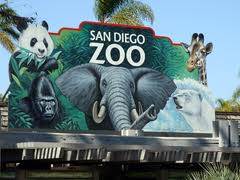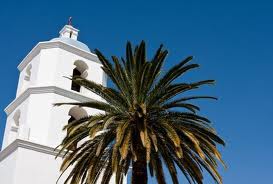21 California Missions
Every one of the 21 California Missions tell a story about the history of California. From the vineyards of Sonoma to the ranches of Santa Barbara to the adobe arcades and red tile roofs of San Diego, the missions have left their mark on who we are and what we have become. By the time the last mission was built in 1823, the Golden State had grown from an untamed wilderness to a thriving agricultural frontier on the verge of American statehood.
21 Cali Missions:
- 1769 - Mission San Diego de Alcalá
- 1770 - Mission San Carlos Borromeo de Carmelo
- 1771 - Mission San Antonio de Padua
- 1771 - Mission San Gabriel
- 1772 - Mission San Luis Obispo de Tolosa
- 1776 - Mission San Francisco de Asís
- 1776 - Mission San Juan Capistrano
- 1777 - Mission Santa Clara de Asís
- 1782 - Mission San Buenaventura
- 1786 - Mission Santa Barbara
- 1787 - Mission La Purísima Concepción
- 1791 - Mission Santa Cruz
- 1791 - Mission Nuestra Señora de la Soledad
- 1797 - Mission San José
- 1797 - Mission San Juan Bautista
- 1797 - Mission San Miguel Arcángel
- 1797 - Mission San Fernando Rey de España
- 1798 - Mission San Luis Rey de Francia
- 1804 - Mission Santa Inés
- 1817 - Mission San Rafael Arcángel
- 1823 - Mission San Francisco Solano
A Little History
In the 18th century, what is now California was populated mostly by Native Americans. Late in the century, Franciscan missions sponsored by Spain and the Roman Catholic church played an important role in establishing European settlement in the region. The Spaniards, who had already colonized parts of Mexico to the south, wanted to protect those colonies and extend their influence northward. The Roman Catholic Church wanted to convert Native Americans to Christianity. The mission system supported both goals.
Mission San Diego de Alcalá was the first Franciscan mission established in San Diego California by Father Junípero Serra. Fifty-four years later in 1823, the Franciscans founded their last of 21 missions at San Francisco Solano. Each mission had an armed presidio to protect it. Each sought to teach the Native Americans both Christianity and European farming methods. Many of the mission churches remain today as living examples of history.
The 21 California Missions that comprise California’s Historic Mission Trail are all located on or near Highway 101, which roughly traces El Camino Real (The Royal Road) named in honor of the Spanish monarchy which financed the expeditions into California in the quest for empire. From San Diego to Los Angeles, the historic highway is now known as Interstate 5. From Santa Clara to San Francisco, the road is called State Highway 82. North of San Francisco, Highway 101 picks up the trail to the mission at San Rafael. From there, State Highway 37 leads to the last mission at Sonoma.
Life in the Missions
Everybody had an important role in the California missions. The Native Americans, Spaniards, and soldiers had jobs to do while following their daily routines. The Spaniards rang bells to tell the Indians to go to Mass, where the Padres taught Catholicism. Also, the ringing of the bells alarmed Indians to sleep, get up, and work. The native men cared for animals and helped farm while the women Indians had to make soap and candles. In return, Spaniards gave them iron materials and taught them to make things to trade and raise money for the missions.
The soldiers protected the California missions from intruders. The pueblos and villages raised a lot of cattle. Missions gave the soldiers in their fort, presidio, water and food to keep them working and protected. Some of the Indians who lived at the missions felt like they were treated unfairly, for good reason. The men had difficult jobs and the women and children lived in dirty rooms. They were dying due to the change of diet and diseases.
Many of the Indians were forced to live on the missions and were treated badly by the Spanish soldiers. Unfortunately, the missions were the main reason for the loss of so many California Indians. They were killed by unfamiliar and unknown diseases, beaten, starved, killed or assimilated into the Spanish culture so much that it is hard to find a true Native Californian today. The Indian way of life changed drastically by the missions. They had to live in the mission compound and follow a hard schedule and they had to follow the rules of the padres and the religion was unfamiliar to them. Thousands of California Indians are buried in mission cemeteries. It’s so sad, I feel so bad for them!
The Missions Today
By 1863, many of the California Missions were in ruins. In the twentieth century, many of the neglected California Spanish Missions were restored, or rebuilt. Most of them are still active parish churches today, and they have excellent museums and interesting ruins.
Have A Great Story About
One of these Missions?
Share it! Or how about some tips when visiting them.
What Other Visitors Have Said
About the Missions
Click below to see contributions from other visitors to this page...
San Juan Capistrano
I haven't been to all of the missions but the one I liked was San Juan Capistrano. It was very interesting and I love the story of the swallows, very cool! …
Thank you for visiting Trippin' Thru California! Hope you enjoy discovering new "things to do" and "fun places" as much as I do!
Welcome to California!
Go Back to Trippin' Thru California's Home Page from 21 California Missions






